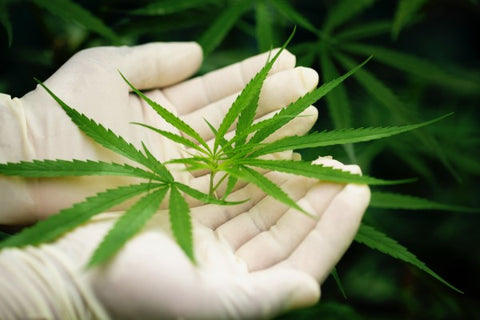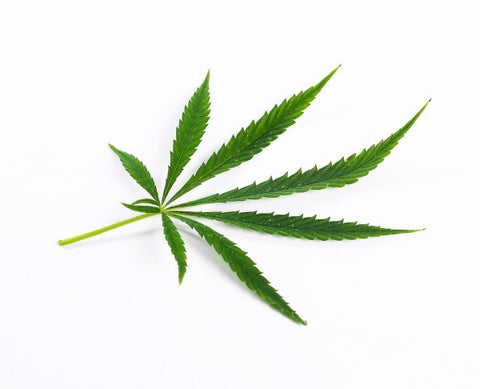
Tabla de contenidos
[HideShow]
- Micropropagation of marijuana plants
- How to micropropagate marijuana plants
- 1. Step by step to carry out Micropropagation in Marijuana
- 2. Tools and Conditions Necessary for the micropropagation of marijuana plants
- 3. Environmental conditions for the micropropagation of marijuana plants
- Techniques used in the micropropagation of marijuana plants
- Advantages and Challenges of micropropagating marijuana plants
- 1. Advantages of Micropropagation in Cannabis Cultivation
- 2. Challenges and Limitations of Micropropagation in Cannabis Cultivation
- Leave a comment
What is micropropagation of marijuana plants
Micropropagation of marijuana plants has emerged as a crucial technique in the cannabis industry, revolutionizing the way these plants are propagated and grown.
Micropropagation has become a fundamental pillar in the commercial production of marijuana plants due to its numerous advantages. This technique allows for the rapid and efficient cloning of plants, which guarantees the reproduction of high-quality genotypes and the obtaining of plants free of diseases and pathogens. Furthermore, micropropagation offers the possibility of conserving and propagating rare and valuable genotypes, thus contributing to genetic diversity and the development of new cannabis varieties with specific characteristics, such as cannabinoid content, terpenes and disease resistance. In an increasingly competitive and regulated market, the ability to produce large quantities of high-quality, uniform plants quickly and reliably has become essential to meet the growing demand for quality cannabis products. In this sense, micropropagation plays a crucial role in providing an effective tool for the expansion and sustainable development of the cannabis industry.

Micropropagation of marijuana plants
Micropropagation is an advanced method of vegetative propagation that is carried out in a controlled laboratory environment. This process involves taking small samples of plant tissue from a mother plant selected for its desirable characteristics, such as high cannabinoid production or disease resistance. These samples are thoroughly disinfected to remove any microbial contamination and then placed in sterile culture medium. In this medium, the tissue cells are stimulated to divide and multiply, forming vegetative shoots identical to the mother plant.
Once the sprouts reach a suitable size, they are transferred to another growing medium that encourages root development. Here, the shoots develop a functional root system that allows them to absorb water and nutrients from the substrate. Finally, young plants are gradually acclimated to normal environmental conditions outside the laboratory, such as sunlight and humidity, to prepare them for cultivation in the field or in greenhouses.
How to micropropagate marijuana plants
Micropropagation in marijuana plants is a delicate process that requires precision, care and a specific set of techniques and tools. The step-by-step process is detailed below, along with the tools and conditions necessary to ensure effective micropropagation.
Step by step to carry out Micropropagation in Marijuana
- Mother Plant Selection : Choosing a healthy marijuana plant with desirable characteristics is the crucial first step. This plant will serve as a source of the explants.
- Explant Preparation : A small part of the mother plant, such as a shoot or stem segment, is cut off, making sure it is free of diseases or pests.
- Explant Sterilization : The explant is cleaned with a sterilizing solution to remove possible contaminants and is acclimated to laboratory conditions.
- In Vitro Culture : The explant is placed in a culture medium that contains nutrients, vitamins and hormones. This medium stimulates the growth and formation of new tissues.
- Shoot Multiplication : Once the samples are established in the culture medium, the tissue cells are stimulated to divide and multiply, forming vegetative shoots.
- Rooting : The newly formed shoots are transferred to a medium that promotes root development.
- Acclimatization : Young plants gradually become accustomed to outdoor conditions, starting in an environment with high humidity and progressively adjusting to a drier and brighter environment.

Tools and Conditions Necessary for the micropropagation of marijuana plants
To carry out micropropagation of marijuana plants effectively, a series of specific tools and conditions are required. Here is a list of the necessary tools and conditions:
- Sterile and controlled environment : It is essential to maintain a completely sterile work environment throughout the micropropagation process to prevent microbial and fungal contamination. This is achieved by using a laminar flow hood to provide clean, contaminant-free airflow.
- Autoclave : Used to sterilize laboratory instruments, culture flasks and other equipment necessary for micropropagation, ensuring a contaminant-free environment.
- Microscopes : It is an essential tool to examine and evaluate plant tissues during the micropropagation process, allowing possible microbial contamination to be detected and the development of sprouts to be evaluated.
- Surgical scalpels and sterile pruning shears : Used to take samples of plant tissues from the mother plant and to make precise cuts during the in vitro cultivation process, ensuring proper manipulation of the tissues.
- Culture flasks and sterile containers : They are necessary to contain the culture media and plant tissues during the micropropagation process, providing a suitable environment for the growth and development of the shoots.
- Culture media : Specific culture media for micropropagation, such as MS medium (Murashige and Skoog), provide the nutrients and hormones necessary for the growth and multiplication of plant tissues, ensuring optimal shoot development.
Environmental conditions for the micropropagation of marijuana plants
The ideal environmental conditions for micropropagating marijuana plants play a crucial role in the success of the process. Here are some important conditions to keep in mind:
- Temperature : The optimal temperature for micropropagating marijuana plants generally ranges between 20°C and 25°C during the day and between 18°C and 22°C at night. It is important to maintain a stable temperature to promote healthy growth and avoid stress on plants.
- Relative humidity : Adequate relative humidity in the growing environment is essential to minimize water loss through transpiration and maintain proper water balance in plants. A relative humidity of 60% to 80% is recommended for micropropagation of marijuana plants.
- Lighting : During the in vitro establishment phase, artificial lighting in the form of LED or fluorescent lights is used to provide the energy necessary for photosynthesis and initial shoot growth. A photoperiod of 16 hours of light and 8 hours of darkness should be provided to promote vigorous growth.
- Ventilation : Adequate ventilation is required in the micropropagation area to ensure a constant supply of fresh air and to prevent the build-up of carbon dioxide and pathogens. However, it is important to avoid strong drafts that can damage plant tissues.
- Sterility : Maintaining a sterile environment is essential to prevent microbial and fungal contamination throughout the micropropagation process. Strict hygiene and disinfection practices, including sterilization of equipment and culture media, must be followed to ensure the success of in vitro culture.
By maintaining these optimal environmental conditions, the survival rate and growth of shoots can be significantly improved during the micropropagation process of marijuana plants, resulting in healthy and vigorous plants ready for transplantation to ex vitro conditions.

Techniques used in the micropropagation of marijuana plants
In the micropropagation of marijuana plants, various specialized techniques are used to achieve rapid and efficient multiplication of plant tissues. Below are some of the most common techniques used in this process:
- Tissue culture : This technique involves growing small samples of plant tissue, such as buds or stem segments, in a sterile culture medium. This medium provides the nutrients necessary for the growth and development of tissues, as well as the plant hormones required to stimulate the formation of new shoots and roots.
- Shoot multiplication (proliferation) : Once plant tissues have established themselves in the culture medium, their multiplication is encouraged through active cell division. This leads to the formation of multiple vegetative shoots from a single tissue sample, allowing mass production of genetically identical plants.
- In vitro rooting : After vegetative shoots have reached a suitable size, they can be induced to develop functional root systems in a specific growing medium. This in vitro rooting process allows the production of complete plants with healthy root systems, facilitating their subsequent transplantation to ex vitro culture conditions.
- Acclimation to ex vitro conditions : Once the plants have developed adequate roots, they are gradually acclimated to normal environmental conditions outside the laboratory environment. During this process, plants are gradually exposed to sunlight and gradually adjust to the humidity and temperature conditions of the outdoor environment.
- Development of specific protocols : In the micropropagation of marijuana plants, it is common to develop specific protocols adapted to the characteristics of the species and the growing conditions. These protocols may include adjustments to growing medium composition, light exposure time, and other environmental factors to optimize plant growth and development.
These techniques are fundamental in the micropropagation process of marijuana plants and allow the mass production of genetically identical plants for commercial, genetic conservation or research purposes.
Advantages and Challenges of micropropagating marijuana plants
Micropropagation in cannabis cultivation offers a number of significant advantages, but also presents certain challenges and limitations.
Advantages of Micropropagation in Cannabis Cultivation
- Genetic Consistency : By cloning plants from a selected mother plant, genetic uniformity is guaranteed, which is crucial to maintaining the quality and specific characteristics of cannabis.
- Accelerated and Efficient Production : Micropropagation allows rapid multiplication of plants, which is especially useful to respond to the high demand of the cannabis market.
- Optimized Use of Space : Since many plants can be grown in a relatively small space, micropropagation is ideal for indoor or space-limited operations.
- Reduced Disease Risk : By growing in a controlled, sterile environment, exposure to pathogens is minimized, resulting in healthier plants.
- Conservation of Rare Varieties : Allows the preservation and multiplication of rare or valuable strains that could be difficult to maintain through conventional cultivation methods.
Challenges and Limitations of Micropropagation in Cannabis Cultivation
- Initial Costs and Maintenance : Establishing a micropropagation laboratory requires a significant investment in equipment and ongoing maintenance.
- Requires Specialized Expertise : The process is technical and requires personnel trained in biotechnology and in vitro culture techniques.
- Risk of Contamination : Despite sterile conditions, there is always a risk of contamination, which can ruin an entire batch of culture.
- Genetic Limitations : Dependence on a mother plant means that any genetic limitations or susceptibility to disease will be perpetuated in all clones.
- Adaptation to the Natural Environment : Micropropagated plants may require a longer adaptation period when transferred to a natural environment, since they have been grown under controlled conditions.

Leave a comment